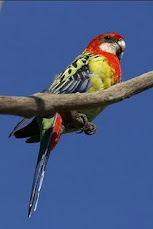






The Philippine Eagle, Pithecophaga jefferyi, also known as the Great Philippine Eagle or Monkey-eating Eagle, is among the tallest, rarest, largest and most powerful birds in the world. A bird of prey belonging to the family Accipitridae, it is also known as "Haribon" or "Haring Ibon," which means "Bird King". Its local name is banog.
The Philippine Eagle's nape is adorned with long brown feathers that form a shaggy crest. These feathers give it the appearance of possessing a lion's mane, which in turn resembles the mythical gryphon. The eagle has a dark face and a creamy-brown nape and crown. The back of the Philippine Eagle is dark brown, while the underside and underwings are white. The heavy legs are yellow with large, powerful dark claws, and the prominent large, high-arched, deep beak is a bluish-gray. The eagle's eyes are blue-gray. Juveniles are similar to adults except that their upperpart feathers have pale fringes.
The average female is about 102 centimeters (3.36 ft) long and weighs about 7 kilograms (15.5 lb). The adult male is about 10 to 20% smaller and averages at about 91 centimeters (3 ft) and 5 kilograms (11 lb).The Philippine Eagle is the world's largest living eagle in terms of length. The species has a wingspan of approximately 2 meters (6.6 ft). The wings of this eagle are shorter than large eagles of open country (such as the Martial Eagle, Wedge-tailed Eagle and Steller's Sea Eagle), but are quite broad and have a greater surface area than any other eagle.
The most frequently heard noises made by the Philippine Eagle are loud, high-pitched whistles. Additionally, juveniles have been known to beg for food by a series of high-pitched calls.




